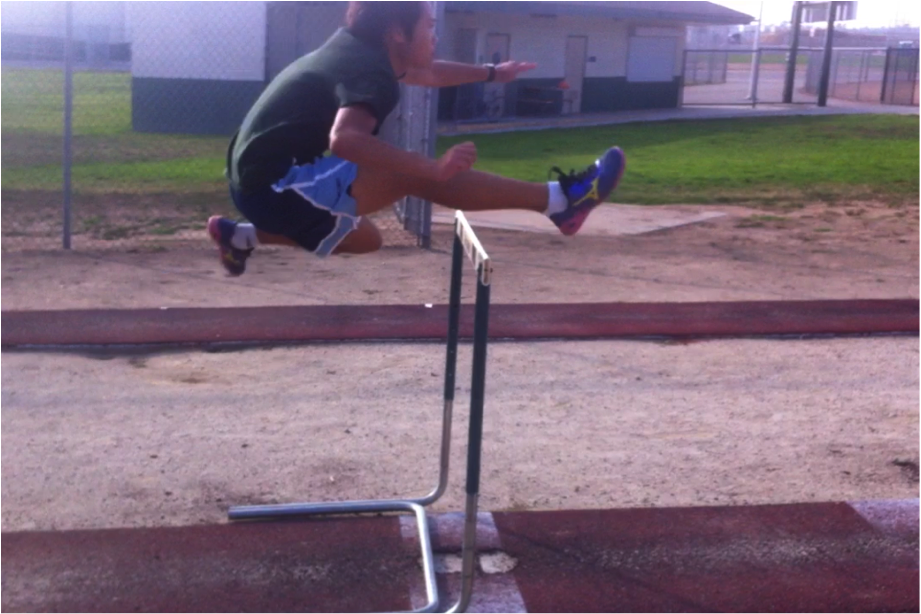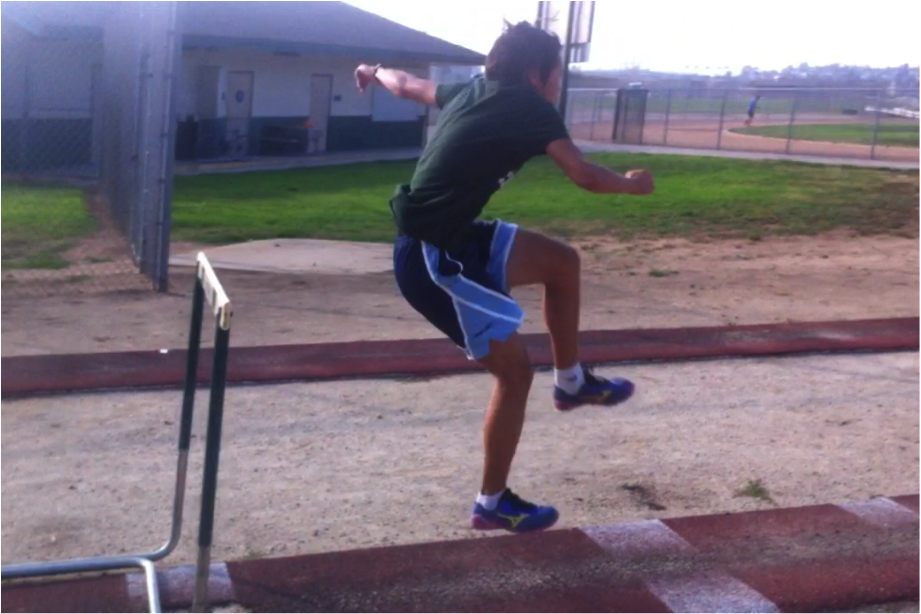The Three-Skip Step
by Thomas Le
Doing something different could be a problem. It breaks our continous cycle that we’re comfortable with and exposes us to unfamiliar events. Depending on the situation, we can react favorably or unfavorably. There could be a solution to the problem by utilizing different resources, or perhaps by changing a method. Once the solution has been rationalized, the new, unfamiliar change has become normal and comfortable again.
[am4show not_have=’g5;’]
[/am4show][am4guest]
[/am4guest][am4show have=’g5;’]
By human nature, we’re bound to react unfavorably at one point to a problem. We could try a new method which doesn’t work at all, or maybe an idea is proposed but doesn’t get incorporated due to lack of resources and time. If new ideas and experiments are constantly tested, then eventually we’ll get some positive results.
A problem that exists in the 110m hurdles is that many elite level athletes have trouble fitting in their steps. Because they’ve become so developed and quick, 10 yards between the hurdles is simply not enough. Hurdlers will resort to quickening their stride rate in order to compensate for their speed and the lack of space. Quickening stride rate faster than what is natural will decrease speed, regardless of technique.
Shorter hurdlers can take advantage of this situation. Their limbs are naturally shorter, so their stride length is naturally shorter. If speed is constant, then stride frequency will increase. This will yield a faster time in the 110m if nothing else goes seriously wrong. Nonetheless, many short hurdlers still have problems trying to fit in their steps.
Two-stepping seems like the best option for most hurdlers wanting to open their strides, but it will probably take some time to apply. The hurdler must be proficient in alternating, and 10 yards is definitely a lot to cover with two steps. It will take a large amount of skill to incorporate, and it’s definitely no easy task. Perhaps a variation of the two-step would be a better solution.
If you look at it from a different angle, two-stepping has three steps. If you count the lead leg touching down as a step, then it would be three steps. When I was more new to the event, I thought I was four-stepping because of that perspective. People kept telling me that I was three-stepping, but I didn’t understand it at the time. The trail leg landing was counted the first step of the three, so I had to ingrain that to my mind when discussing hurdles. The lead leg touching down, or the transition step as I would call it, had the role of recovering the athlete from hurdle clearance.
The transition step from the lead leg to the first step is the shortest step a hurdler will take throughout the race. Typically, the trail leg will land immediately after the lead leg if the hurdler has relatively proficient form. The quick transition decreases the stride length, resulting in a very quick, short step. If you remove that transition step, you will get something that I call “three-skip stepping.”
The lead leg won’t touch down right after hurdle clearance; the trail leg will. Two-stepping utilizes two normal steps and a transition step, while three-skip stepping utilizes three normal steps. Since the regular steps take more space than the transition step, the three skip step theory would be easier to execute in terms of reaching. In a sense, three-skip stepping is the middle ground between three-stepping and two-stepping. Three stepping is a little too cramped, while two-stepping is a little of a stretch.
Here’s how the hurdle clearance portion may look in the three-skip step:

Here I go through the normal hurdle motions over a 39” hurdle. There shouldn’t be any change in form going into the hurdle.
The force on my trail leg felt like the second phase of the triple jump. It was quite heavy in impact, and I almost collapsed numerous of times due to the force. It will probably look different in the future when this theory is more developed, but this is just a rough trial. The form will probably differ to accommodate individual styles and taste, so you can expect it to look different from person to person.
The heavy impact sensation will probably be common for those new to the three-skip theory. If you’ve done some sort of triple jump training, this would be easier for you, as this feeling is just like the “hop, skip” phase. The hardest part about the hurdle clearance isn’t really about moving the lead leg away in time, but it is moving the trail leg fast enough. You could just bend the lead leg so that it doesn’t hit the ground. The trail leg has to be fast enough to land immediately because the hurdler has to propel off the trail leg. If the trail leg lands too late, the force of landing will multiply, and it may be difficult to recover. The lead leg is not there to recover the hurdler from hurdle clearance to sprinting form, so a fast trail leg has to compensate.
The biggest problem lies in taking enough space with the three steps. Even though it should take more space than two-stepping, reaching could be a problem for many. The hurdler will have to be very fast in order to have sufficient stride length without detrimentally decreasing stride rate.
Other than that, it’s probably best to have somewhat good hurdling form. You can see that I was able to complete the motion even with several flaws in my form, so it doesn’t need to be perfect. My trail arm went away from my body, and my lead arm was also way too wide coming off the hurdle. I also tensed up a lot when landing, and that’s a result of embracing for impact. My trail leg wasn’t fast enough, so landing off the hurdle was quite difficult.
I knew that the landing would be heavy, but it felt pretty awkward to skip my lead leg and quickly bring my trail leg down. I would just force my trail leg down and hope that I would skip the transition step. I’m sure if I had practiced more, my fear of landing straight to my trail leg would gradually disappear. My form would probably be a lot better as a result, and the three-skip theory would be a little more tangible.
Good form with lots of practice with the theory will help the hurdler to cover the space between the hurdles. Hurdlers with good form are able to create power going off the hurdle. When experimenting, I felt that Aries Merritt’s and Jason Richardson’s wide, circular lead arm style in 2012 produced a lot of force. It wasn’t the most efficient, but it felt much easier to three-step for me as I felt more powerful off the hurdle. Perhaps there are other variations of style in form that can be tweaked to optimize force. If we can create a style of hurdling that produces even more force, then covering enough space in between the hurdles with three-skip steps is more possible.
Initially, I was thinking that only shorter hurdlers can complete this theory. If more air time were given, then the hurdler can use that time to cycle the lead leg and skip that step. When I experimented over 39” and 42,” I felt that 39” would be easier. I didn’t need the extra time the 42” hurdle would give me. In fact, I was glad to hurdle over lower height. When I went too high over the hurdle, it was very difficult for me to recover on my trail leg because I would buckle from my weight. The 39” hurdle was much more lenient on my technical flaws, and landing was less stressful.
In the end, I think anyone eager to dedicate him or herself to this theory is capable of executing it. It’ll probably take time, and it’ll probably be frustrating. Of course, when doing something different, we generally prefer to have favorable results with ease. This theory may work, but it can definitely give us slower times. If this theory does not prove to be effective, I hope we can learn what went wrong and continue to revise.
Of course, there is also the opposite end of this spectrum. Perhaps a hurdler will execute this theory and extract its full potential. That hurdler will now be able to utilize even more of his speed in the 110m, breaking the limiting factor that most elite hurdlers struggle with. If that happens, a new hurdling era will be born.
[/am4show]



